You need to meet the monitoring requirements for device metrics. What should you configure?
You need to design a module deployment strategy that meets the device requirements. What should you create?
You need to configure a gateway for the child devices. The solution must meet the networking requirements. Which gateway pattern should you use?
You need to configure loT module routing to meet the device requirements.
How should you complete the route? To answer, select the appropriate options in the answer area.
NOTE: Each correct selection is worth one point.
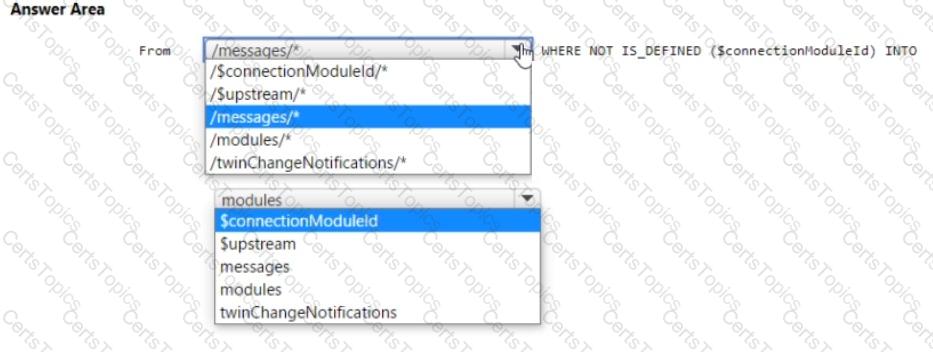
You need to the configure the device parameters to meet the device requirements. Which file should you update on each device?
You need to develop a messaging app that meets the technical requirements. Which shared access policy should you use?
You need to configure device access to the loT What should you use?
You need to add Time Series Insights to the solution to meet the pilot requirements.
Which three actions should you perform in sequence? To answer, move the appropriate actions from the list of actions to the answer area and arrange them in the correct order.

You need to store the real-time alerts generated by Stream Analytics to meet the technical requirements.
Which type of Stream Analytics output should you configure?
You need to recommend the format of telemetry messages to meet the POV requirements.
What should you recommend?
During the POV phase, telemetry from IoT Hub stops flowing to the hot path. The cold path continues to work.
What should you do to restore the hot path?
You need to configure Stream Analytics to meet the POV requirements.
What are two ways to achieve the goal? Each Answer presents a complete solution.
NOTE: Each correct selection is worth one point.
During the POV phase, you connect a device to IoT Hub and start sending telemetry messages.
You need to verify the content of the messages received by IoT Hub during the POV phase.
What should you use?
You have an Azure loT hub
You have four Azure 10T Edge devices and. The device twin code shown in the following table.
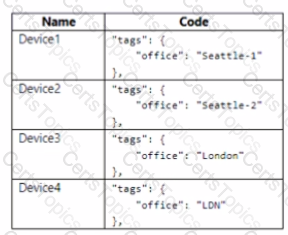
You have three deployments and the deployment code shown in the following table.
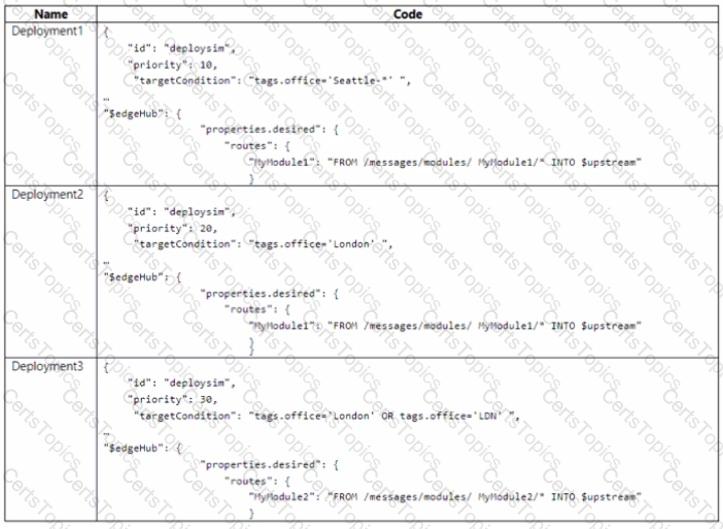
For each of the following statements, select Yes if the statement is true. Otherwise, select No. NOTE: Each correct selection is worth one point.

You have an Azure 10T solution that includes an loT device named Device1.
You need to enable an loT Plug and Play app for Device1.
How should you complete the device connection? To answer select the appropriate options m the answer area.
NOTE: Each correct selection is worth one point.

You have an Azure subscription that contains an Azure loT hub named Hubl and an Azure loT Edge device named Devicel.
You need to configure Devicel to operate in extended offline mode and to support modifying the configuration of modules deployed to Device! while the device is offline.
Solution: From Microsoft Visual Studio Code, you modify the deployment manifest and you configure the address of the localhost for the container registry in the runtime settings of edgeAgent. You deploy the manifest to Device1, and then you restart the device.
Does this meet the goal?
You need to use message enrichment to add additional device information to messages sent from the IoT gateway devices when the reported temperature exceeds a critical threshold.
How should you configure the enrich message values? To answer, select the appropriate options in the answer area.
NOTE: Each correct selection is worth one point.
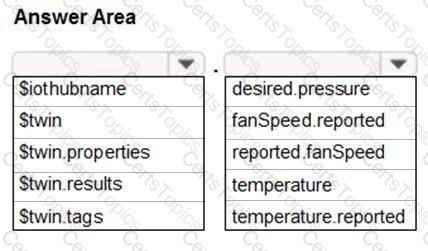
You need to recommend a solution to keep device properties synced to IoT Hub. The solution must minimize data loss caused by the connectivity issues.
What should you include in the recommendation?
What should you do to identify the cause of the connectivity issues?
How should you complete the GROUP BY clause to meet the Streaming Analytics requirements?
You plan to deploy Azure Time Series Insights.
What should you create on iothub1 before you deploy Time Series Insights?
You are writing code to provision IoT devices by using the Device Provisioning Service.
Which two details from the Overview blade of the Device Provisioning Service are required to provision a new IoT client device? To answer, select the appropriate detail in the answer area.
NOTE: Each correct selection is worth one point.
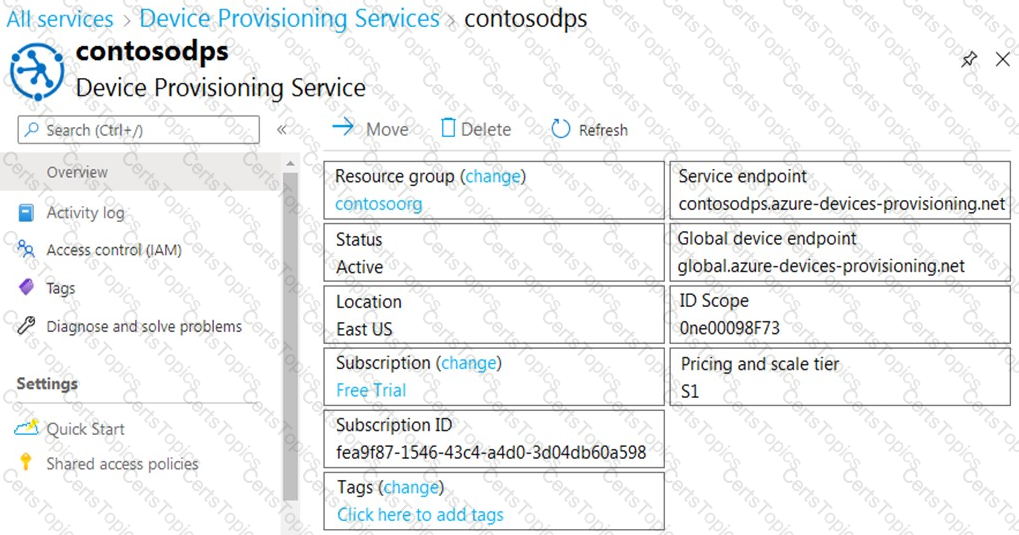
You create a new IoT device named device1 on iothub1. Device1 has a primary key of Uihuih76hbHb.
How should you complete the device connection string? To answer, select the appropriate options in the answer area.
NOTE: Each correct selection is worth one point.

You need to enable telemetry message tracing through the entire IoT solution.
What should you do?